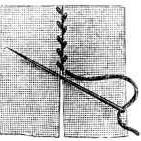OpenKIM is a curated repository of conventional and machine learning interatomic potentials that are compatible with many major simulation codes through a simple plug-and-play API. Each potential is verified for coding integrity and benchmarked against a variety of material properties, empowering users to discover and use the best potentials for their research. Read more
 OpenKIM is funded by the NSF.
OpenKIM is funded by the NSF.
OpenKIM is a curated repository of conventional and machine learning interatomic potentials that are compatible with many major simulation codes through a simple plug-and-play API. Each potential is verified for coding integrity and benchmarked against a variety of material properties, empowering users to discover and use the best potentials for their research. Read more
 OpenKIM is funded by the NSF.
OpenKIM is funded by the NSF.
-
07-Aug-2025
New OpenKIM front page launched
We have launched the new openkim.org front page with a streamlined interface and new functionality for finding results for arbitrary multi-species crystal structures.
-
31-Jul-2025
KIM Quarterly Update (July 2025)
The KIM Quarterly Update for July 2025 has been published with announcements, upcoming events, and ongoing developments.
-
30-Apr-2025
KIM Quarterly Update (April 2025)
The KIM Quarterly Update for April 2025 has been published with announcements and ongoing developments.
-
11-Apr-2025
KLIFF 1.0 released
The KIM-based learning-integrated fitting framework (KLIFF) has reached the milestone 1.0 release, including many new features, bug fixes, and enhancements.
-
25-Mar-2025
kim-api-2.4.0 released: Improved handling of large parameter files
In addition to minor bug fixes and improvements, this release refactors handling of model parameter files to use base64 enconding instead of the hex format of the xxd utility. This allows for more efficient handling of large parameter files.
- Model Drivers 38
- Models 661
- Test Drivers 24
- Tests 99,762
- Reference Material Properties 135,220
- Verification Checks 10

Please cite the KIM Project and content obtained from this site if you use it in published work.
# Define KIM model and get Si diamond lattice parameter for this potential
kim init SW_StillingerWeber_1985_Si__MO_405512056662_006 metal
kim query a0 get_lattice_constant_cubic crystal=["diamond"] species=["Si"] units=["angstrom"]
# Setup diamond crystal
boundary p p p
lattice diamond ${a0}
region simbox block 0 1 0 1 0 1 units lattice
create_box 1 simbox
create_atoms 1 box
mass 1 28.0855
# Define atom type to species mapping
kim interactions Si
# Compute energy
run 0









